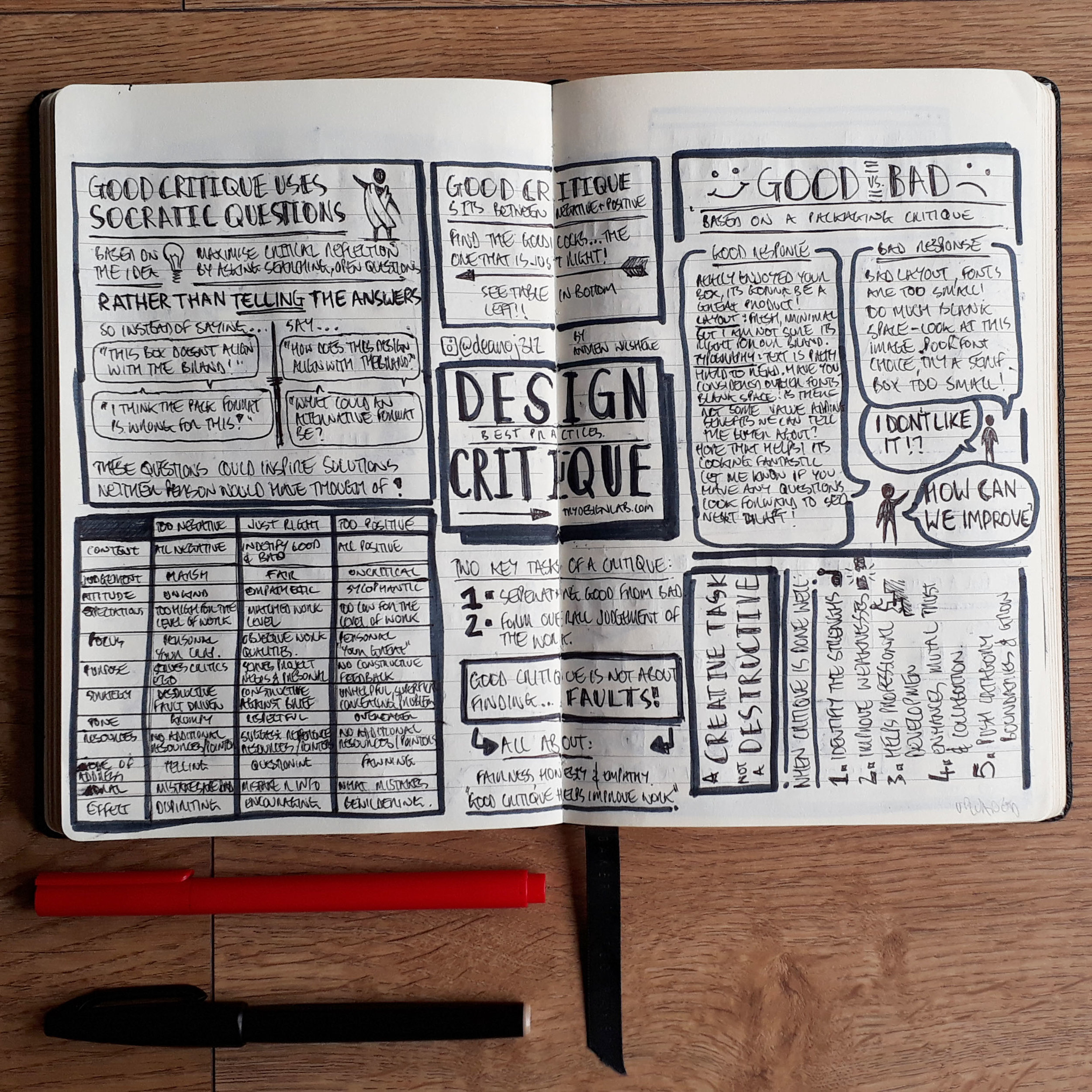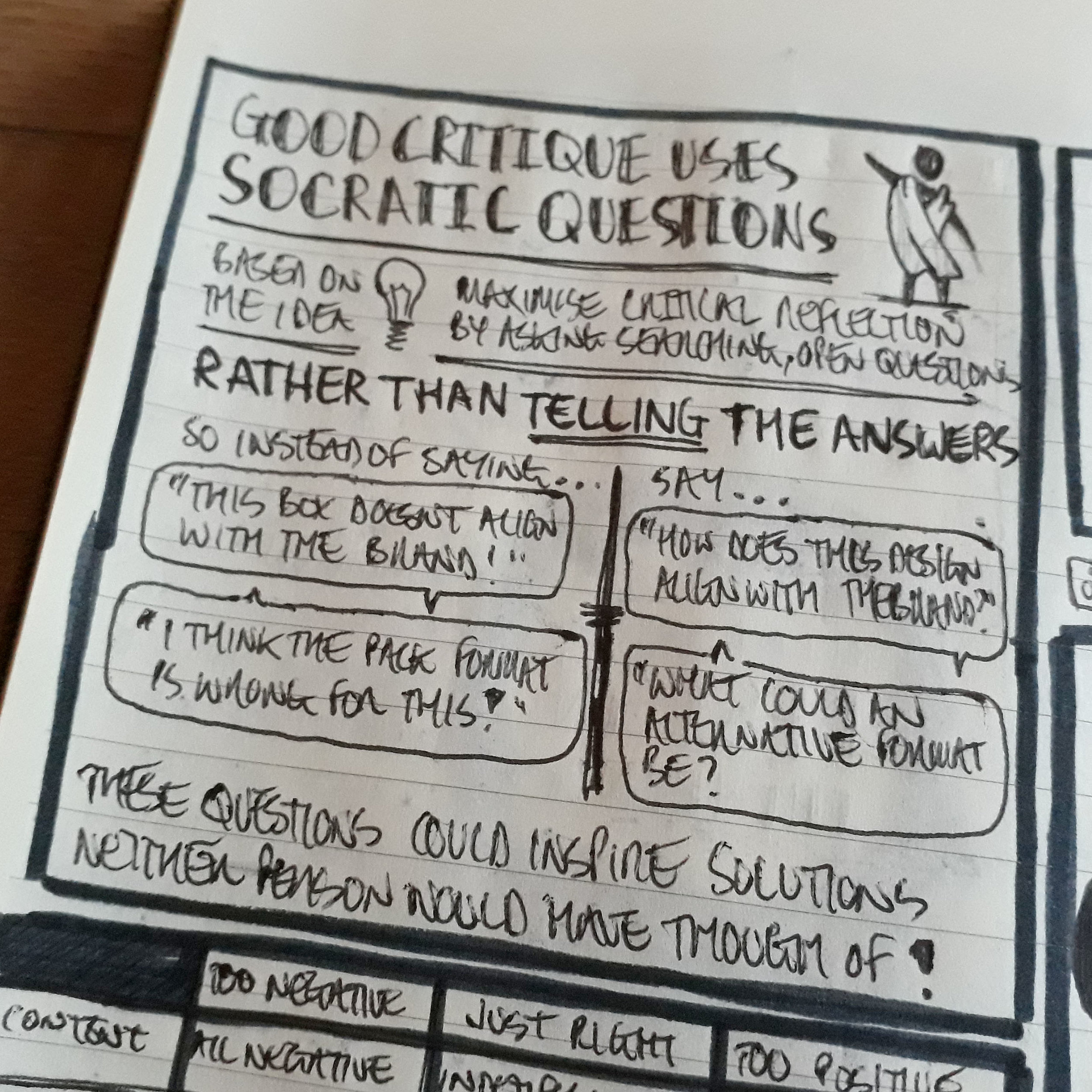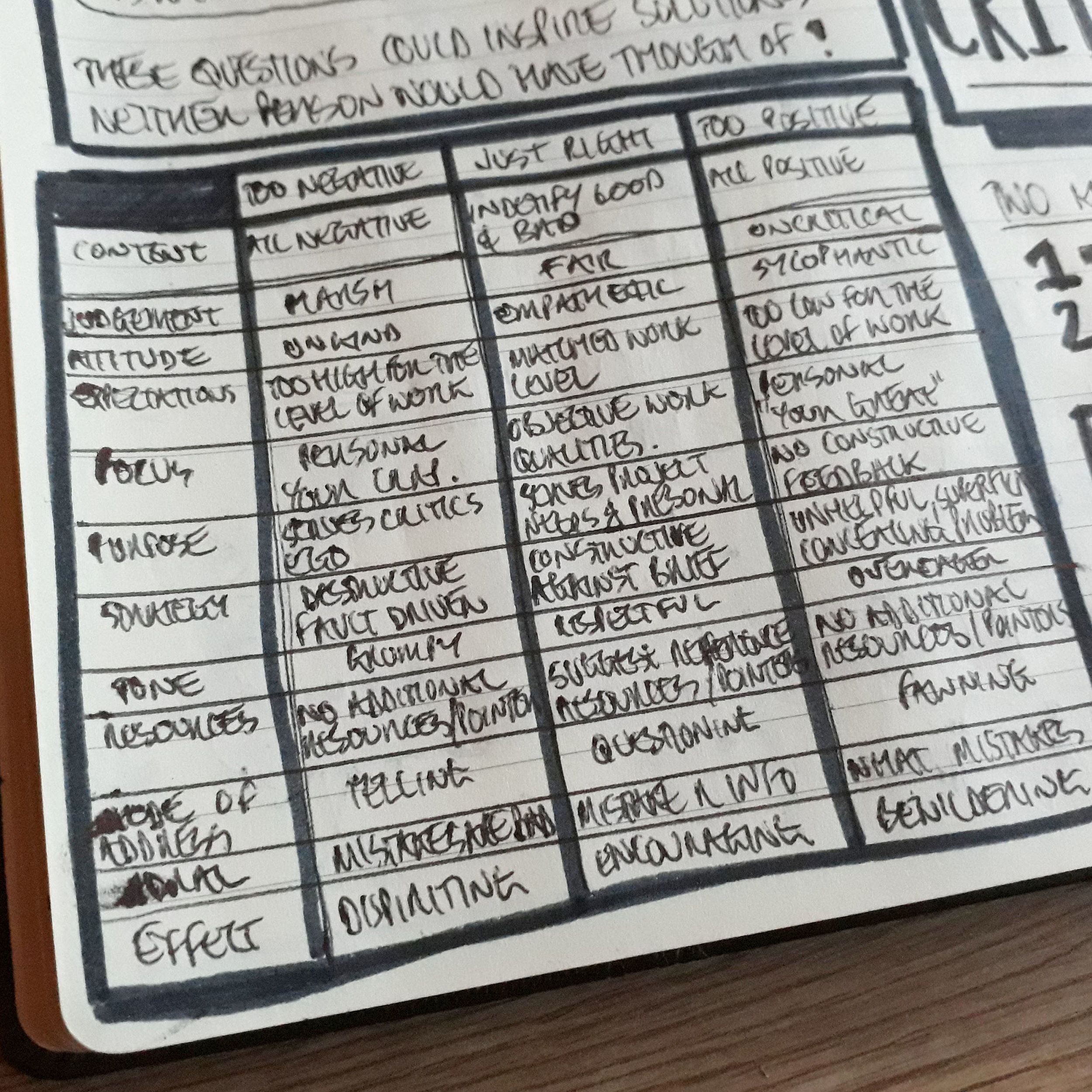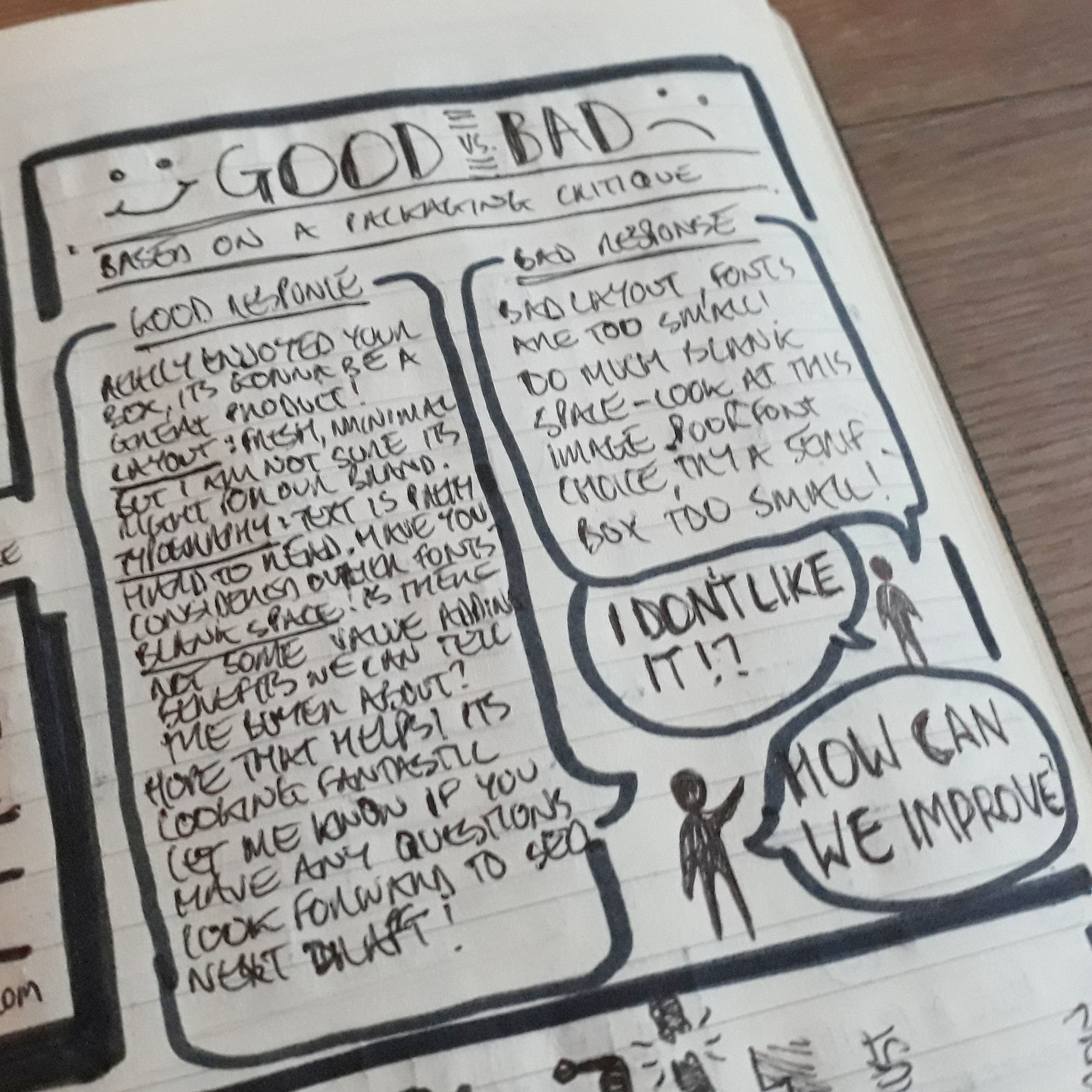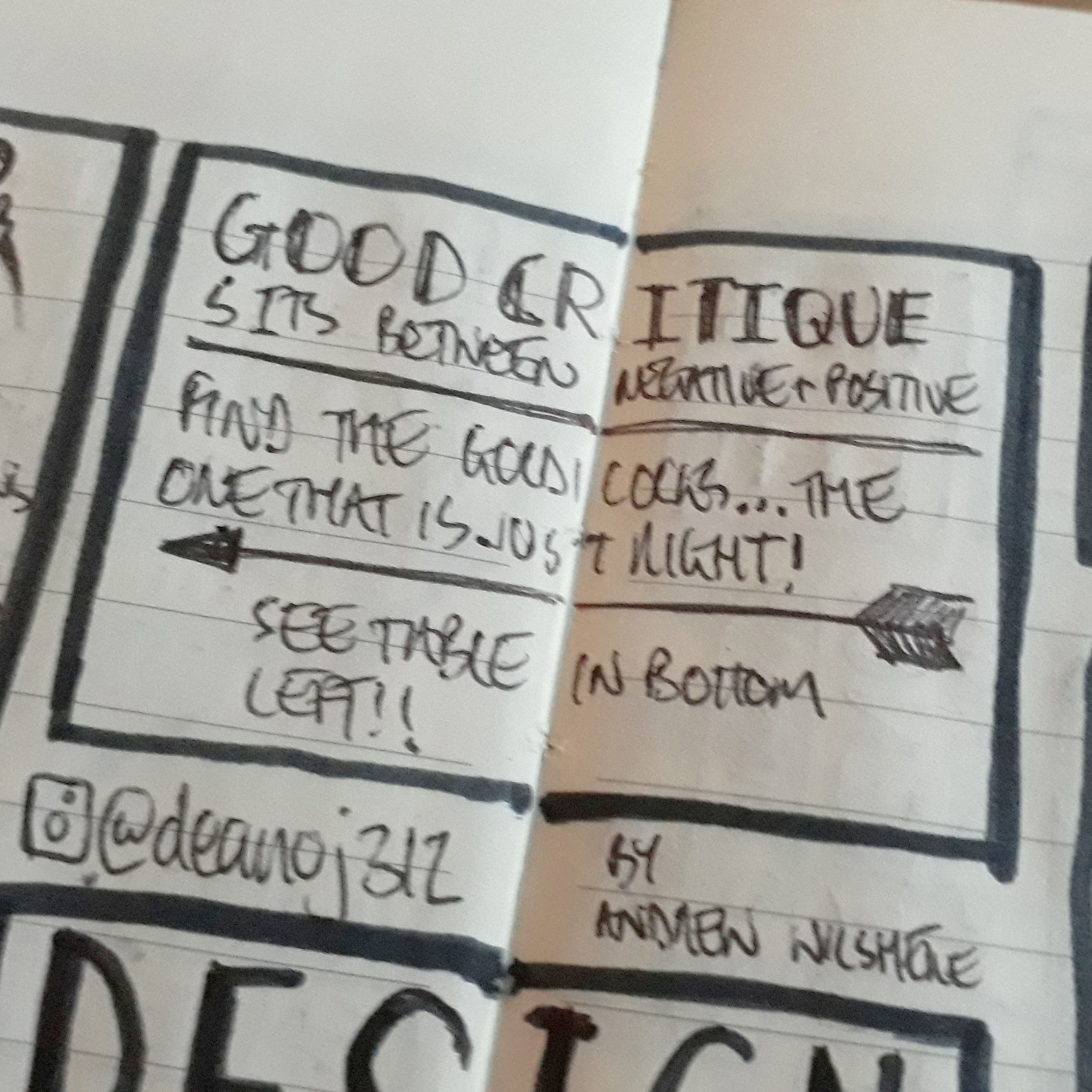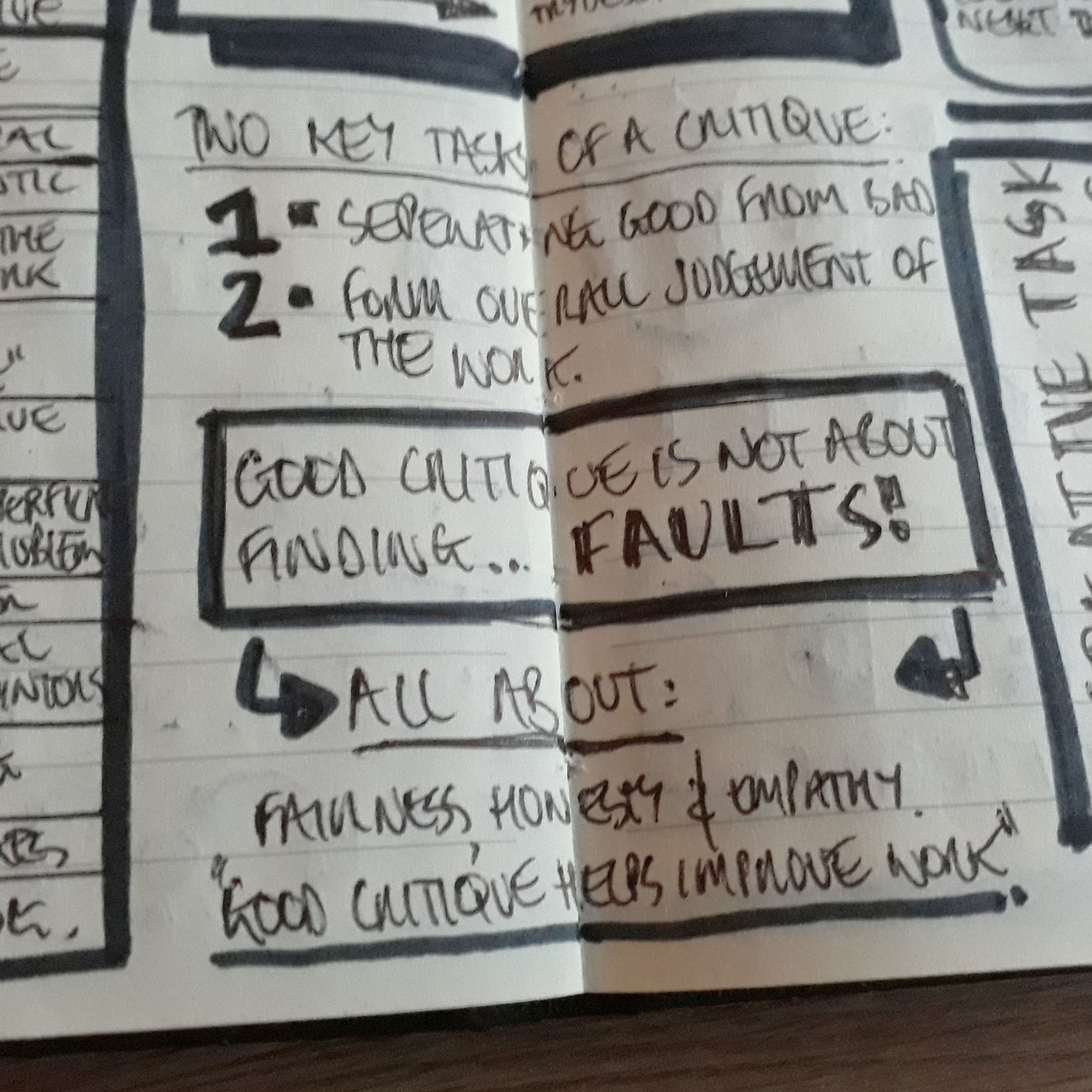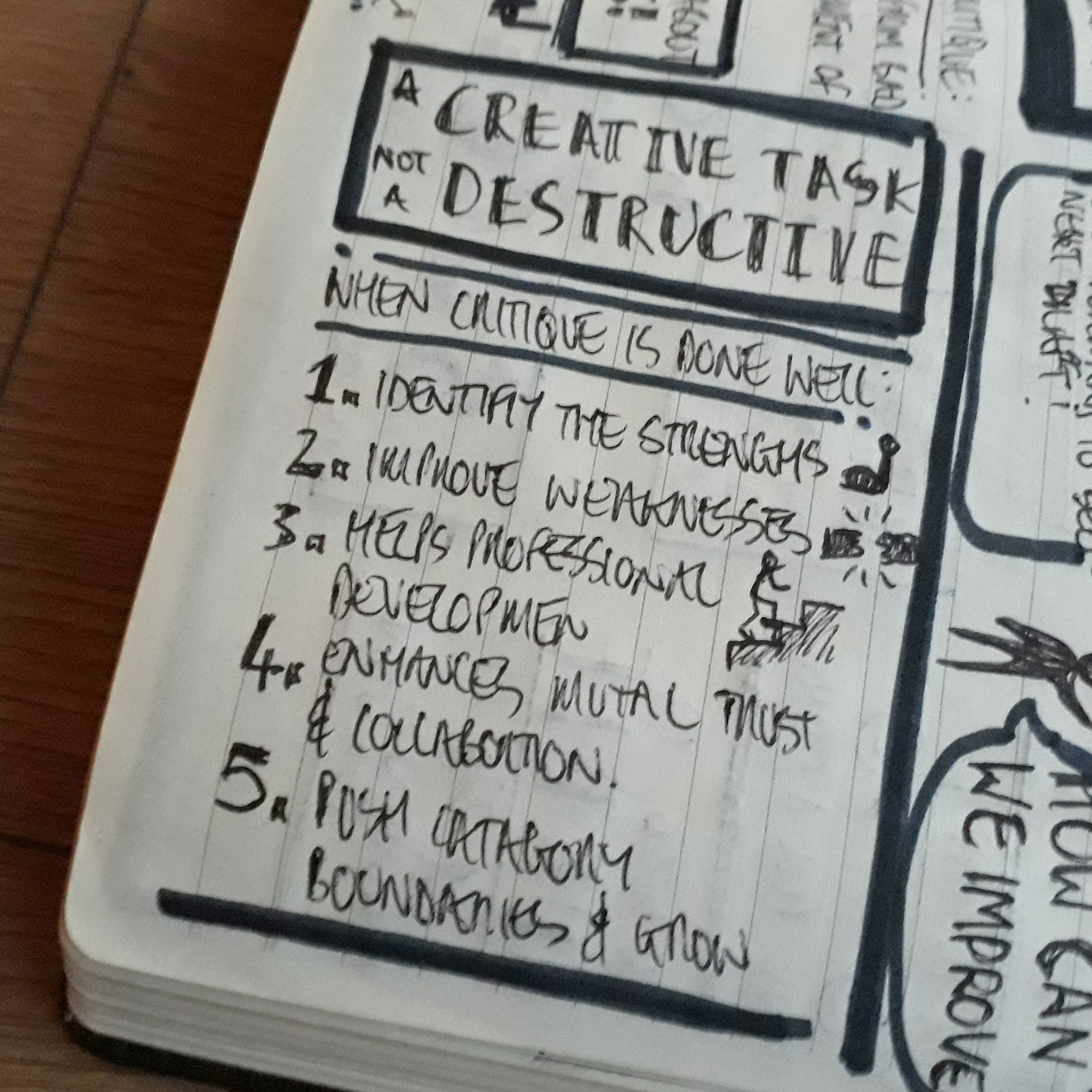The Power of Criticism
Image courtesy of @joannakosinska via Unsplash.
So many of us dread criticism and critiques.
It’s been twisted into something that seems like a negative part of the creative process.
But the word ‘criticism’ isn’t inherently negative.
Criticism is actually “the analysis and judgment of the merits and faults of [a piece of] work”, according to the Oxford English Dictionary.
So it’s both positive and negative feedback, right?
Unfortunately, not always.
The reason why so many of us fear and loathe critiques is that people often do it wrong.
Criticism should be constructive, not destructive.
So how do you do a critique right?
Image courtesy of @apreble via Unsplash.
How to conduct a constructive critique
A good, constructive critique is a balance of negative and positive comments – one of the best practices is to use Socratic questions.
Socratic questions are open-ended questions: the goal is to maximise the amount of critical reflection whilst searching for the best possible solutions.
Don’t tell people the answers!
You need to bring them into the critique process, empowering them to come to a better solution, which studies show means the person receiving the criticism is more likely to accept your critique, and come to a more effective solution.
This means that, when giving feedback, you shouldn’t just say ‘I don’t like X’. Instead, you should be saying ‘How about we change X to Y?’, or, if you can’t think of a solution, say, ‘I don’t think X is working, because of XYZ’.
Saying ‘I don’t like X’ isn’t helpful at all, since it’s coming from a subjective, personal viewpoint, and, while that person may have the right intentions, they may not have the best interest of the project at heart.
You can break the criticism process down into two key parts: separate the good from the bad and form an overall judgment of the work.
Remember, critiquing work is NOT about finding all the faults.
As trydesignlabs.com says: “Good critique is all about fairness, honesty, and empathy - good critique helps improve the work”
So, instead of saying… “This packaging design doesn’t align with the brand”
Say… “How does the design align with the brand?”
Or, instead of saying… “This logo design is completely wrong for this.”
Say… “What could an alternative logo design look like?”
These questions could inspire solutions that neither person has thought of – which can only be a good thing for your project.
Image courtesy of @felipecorreia via Unsplash.
Benefits of constructive criticism
Still not convinced?
We’ve created a list of the benefits of constructive criticism, so you know how it can improve your creative process::
Helps you grow - you can’t possibly grow as a creative, or, indeed, as a person, without knowing what’s right and what’s wrong.
Figure out where your strengths and weaknesses are – if there’s a particular piece of criticism that keeps popping up, then that’s something you need to work on. You can always improve something, especially if it’s something with which you don’t have a natural skill. Plus, you can see where your strengths lie and continue to improve those, too, so you can be the best.
Improves your product/service – whatever you’re working on will be improved as a result of constructive criticism, as well. As Hemingway said, ‘The first draft of anything is shit.’
Think about yourself more objectively – when you’re more distanced from your work, once you’ve created it, you can deliver constructive criticism to yourself, and see your work more objectively.
Inspires action – after getting some particularly useful criticism, it can fire different synapses in your brain and awaken something else - you could have amazing ideas on how to improve your work, or even for something completely different.
Helps you see things from a different perspective – we’ve all been there - you’re hunched over your desk, working on a project for what seems like aeons, and you’re in too deep. You may not know when or if there’s something wrong, or if you’re veering off-course entirely. You’re on the inside looking out, and it takes someone else to see the bigger picture.
Image courtesy of @ninjason via Unsplash.
How to embrace criticism
Now we know what criticism is and why it’s important, how do we actually embrace it, and turn it into action?
It can be hard not to take criticism of your work personally, and not to let your emotions get the better of you.
Imagine the scene: you’ve just come out of a critique, your dread and loathing has turned to panic, and your mind is roiling with too much information, with impostor syndrome looming over your shoulder once again.
What do you do next?
Take a deep breath. Make a cup of tea (probably de-caff is best). Quell your nerves.
Try to distance yourself from your work. Your work is not you. Sure, you made it, and there’s a part of yourself in that work, but it’s not actually you. As Chris Do of The Futur says, be “Passionate while creating” and “Detached during the critique”, “be passionately detached from your work”.
Accept that you cannot be amazing at absolutely everything you do. Even in your job, whether you’re writing, designing, capturing photographs, illustrating, marketing… whatever you’re doing, it’s impossible to create something so good that no-one can criticise it. No-one’s work is above critique.
Bear in mind that what you’re working on is not for you. It’s for your someone else, someone with different values, beliefs, experiences, etc. Put yourself in their shoes.
Remember that people don’t give criticism if they don’t care. Most people want to see you - and your project - succeed. For the critic, this is a two-fold benefit. One is short term: deliver the best project possible. And long term: you grow as a professional.
It’s okay to have flaws, you’re only human. Even if you’re amazing at something, no-one is ever really the best.
What you know today is not what you know tomorrow, and criticism is part of learning. As we always say at NSC, always be learning.
If you have questions about your critique, ask them - push them for the why. You can turn destructive criticism into constructive criticism by getting clarity.
Image courtesy of @carsonarias via Unsplash.
So that’s all you need to know about criticism in creative business – what it is, why it’s useful, and how you can channel it into your work.
Remember, a critique should never be a destructive task!
When it’s done well, it identifies strengths, addresses weaknesses, helps professional development, enhances team trust and collaboration, and pushes the creative boundaries, helping everyone grow.
Here are some nudenotes that inspired us to create this blog article:
If you have any other tips on how to embrace criticism, or how you’ve overcome any critiquing horror stories, we’d love to hear them, so pop them in the comments below.






